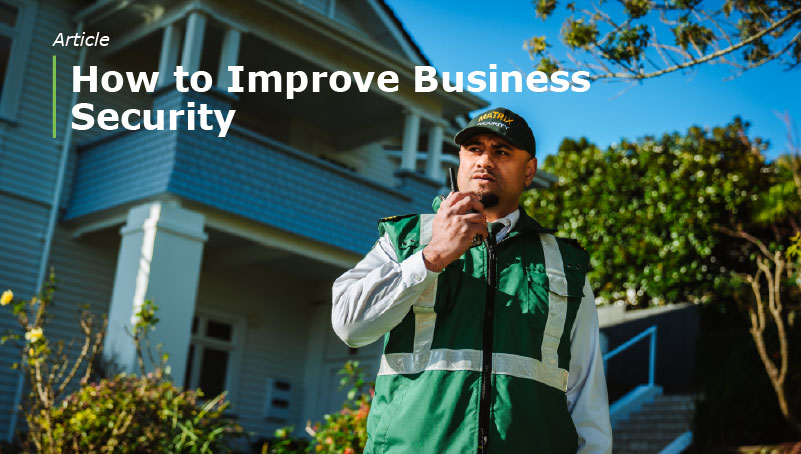Tips on selecting the right video surveillance system for your business.
This article came from the latest West Auckland Business magazine – Issue 53
We all know that video surveillance protects businesses from crime and vandalism. And it’s also vital for capturing evidence of a crime.
However, there are several less well-known benefits.
Video surveillance is also a valuable tool for protecting the health and safety of employees, especially when working out of hours or accessing secluded areas like car parks. The latest technology performs advanced analytical functions such as detecting vehicles, people, faces, and objects. What’s more, it can provide business intelligence data (counting traffic, people, and animals, for example).
There are plenty of great reasons to invest in video surveillance. Whether installing for the first time or upgrading your system, getting started can be daunting, even more so if technology isn’t your thing. In this article, we share our advice on the essential elements to help guide your decision-making.
Indoor vs outdoor use:
The first step is to think about the areas you want to monitor. Some cameras are made for indoors only and are not suitable for outdoor use. So, if you want a system just for external areas, ensure the cameras are designed for that purpose. They must be waterproof and able to cope with temperature variations.
Most systems will perform well in bright, sunny conditions. However, many businesses prioritise overnight monitoring as the prime time for break-ins and vandalism. If that’s the case for you, investing in a system with night vision capabilities is worthwhile.
Picture quality and clarity:
A pixel count of around 1080 is standard for most surveillance systems. This ensures you get a clear image. You may need a higher pixel count for poorly lit areas or at night. Higher pixel counts also allow for what’s called digital zoom. It means you can get up close and record a clear picture for identification or documentary evidence.
Motion sensors and movement:
Motion sensors only spring into action when they detect movement. While surveillance systems with movement features can zoom in or move around, allowing you to track an intruder. These extra features are worth considering depending on the areas you want to monitor and your requirements. However, they usually cost a bit more
Storage:
The two main types of storage are the cloud and an internal video recorder. Cloud options give you unlimited data storage, whereas internal storage drives have a limit. The best choice depends on whether your system is motion-activated, time-dependent or set to record continuously. Motion-activated systems or those operating only at nighttime need less storage than 24/7 surveillance systems.
Remote access:
Remote access is another handy feature. It means you or a security provider can check the system away from your business premises. Video management system: The final feature to consider is a video management system (VMS). The type of solution you require will depend on the intended use. Do you plan to monitor video footage constantly or only when motion is detected? VMS or in-built analytics alerts you to suspicious activity. It applies analytics, improving the responsiveness and effectiveness of your surveillance. All functions are achieved using highly advanced video analytics software. There is no end of options when it comes to video surveillance systems.
Use these tips to help your selection. And if you need more expert guidance, contact our Security Consultants for obligation-free recommendations.

